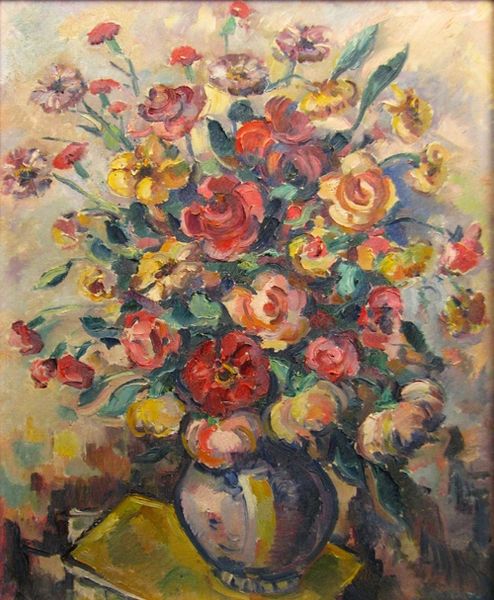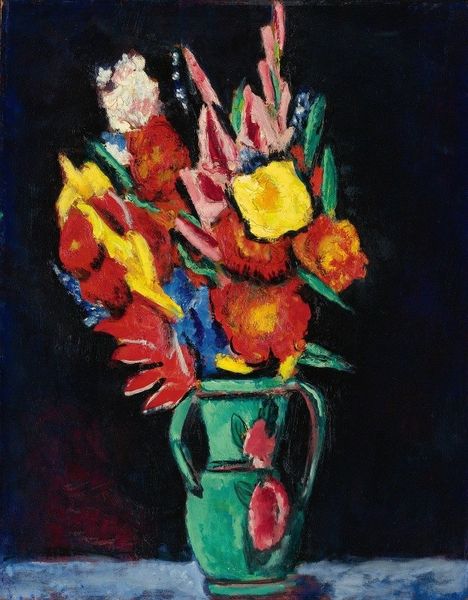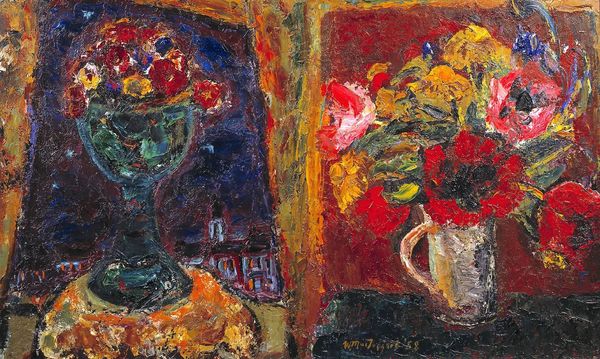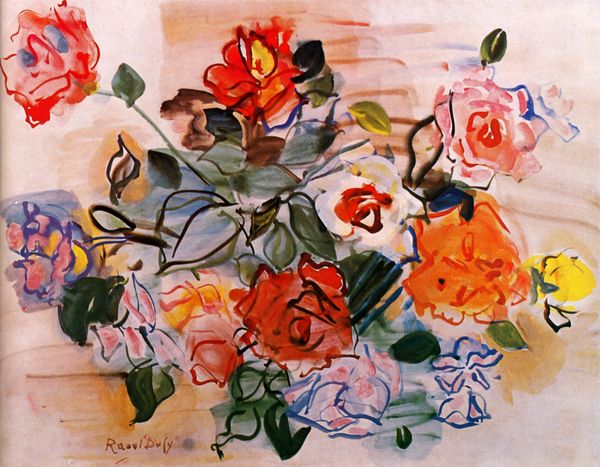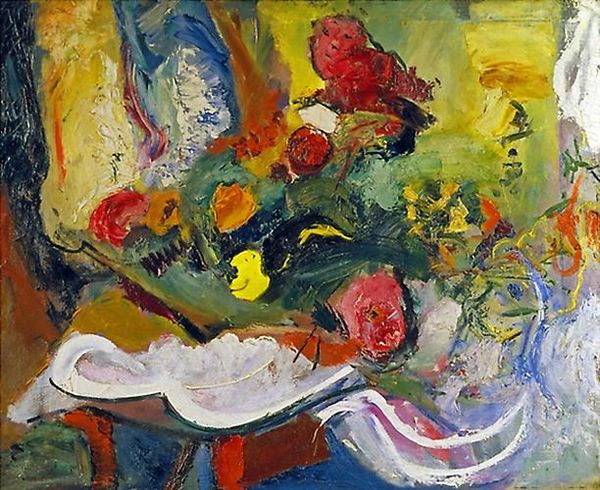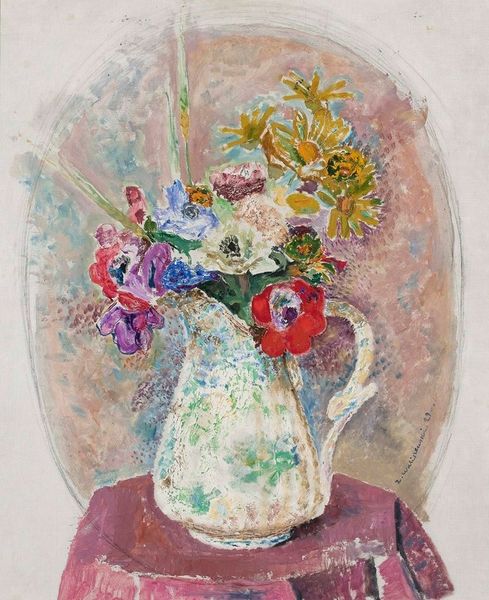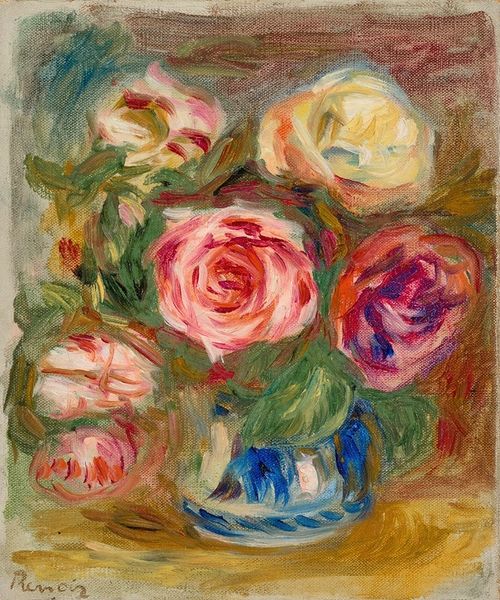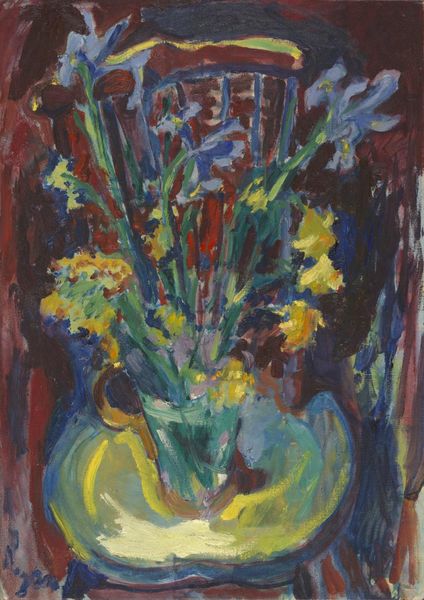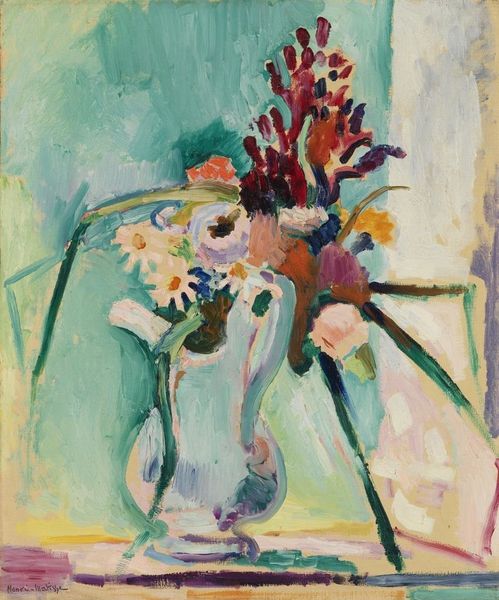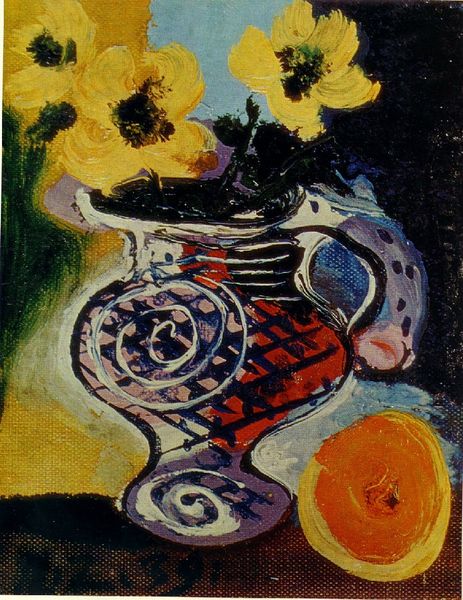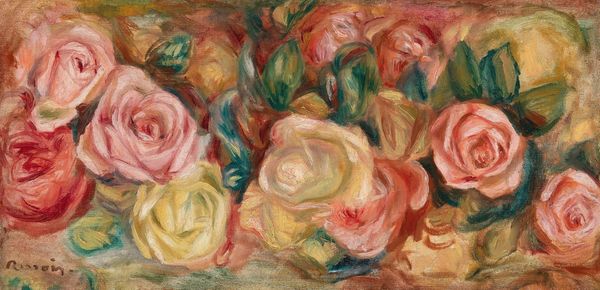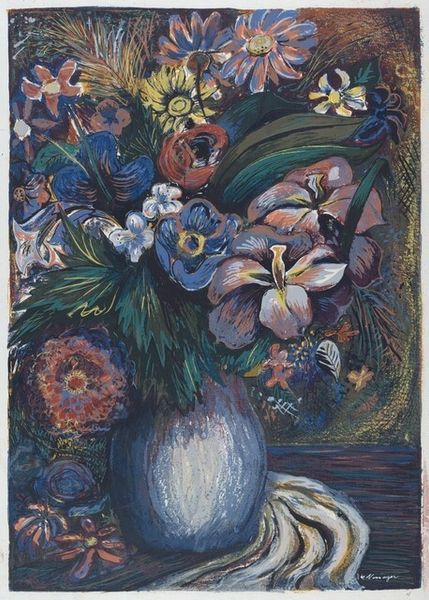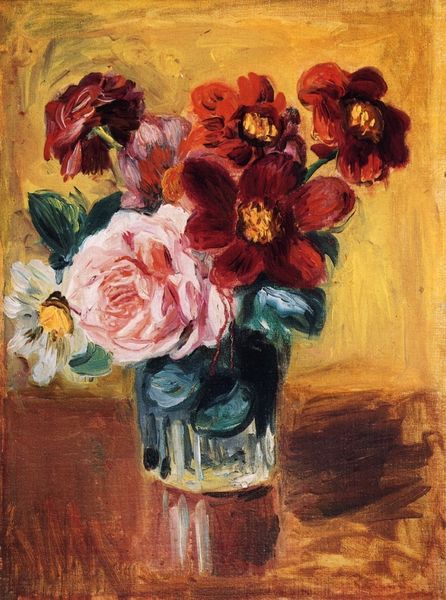
acrylic-paint
#
abstract expressionism
#
fauvism
#
fauvism
#
acrylic-paint
#
figuration
#
neo expressionist
#
post-impressionism
Copyright: Ligia Macovei,Fair Use
Editor: Here we have an untitled piece from 1970 by Ligia Macovei, done in acrylic paint. It strikes me as a very vibrant, almost celebratory depiction of flowers, but the application is fairly rough, particularly for a still life. How would you interpret this work? Curator: What's immediately compelling is its intersection with the Romanian artistic context of the time. The liberalisation that occurred in the 60s still had influence, and the artwork appears caught in this shift. Can you see how it resonates with both the lingering control over subject matter – the acceptable genre of still life – yet strains against those limitations through the bold fauvist colour and expressive neo-expressionistic brushwork? Editor: Yes, I see that tension now. So, this seemingly straightforward still life is actually a coded expression of something more? Curator: Exactly. How does this play with the viewer? Think of the expectations a public under a totalitarian regime might bring to a gallery space. Would they be primed to read beyond the surface of something so visually effusive? The exuberance could, in fact, be a sanctioned release, or it could hint at unsanctioned, perhaps even revolutionary feelings. Do you see the subversive potential now? Editor: Absolutely. The freedom of the brushstrokes and the intensity of the colours become a language of their own, a silent rebellion almost. I hadn’t considered the public role of art in that specific context before. Curator: And Ligia Macovei uses accepted genres to explore possibilities. Consider the institutional framework too – galleries that showed work like this, even if seemingly ‘safe’, provided a platform, a sanctioned space for dialogue, however subtle. Editor: I guess I was focusing too much on the image and not enough on its context. This has completely changed how I see it; it's much more than just a painting of flowers now. Curator: Indeed. Looking at art involves reading history.
Comments
No comments
Be the first to comment and join the conversation on the ultimate creative platform.
